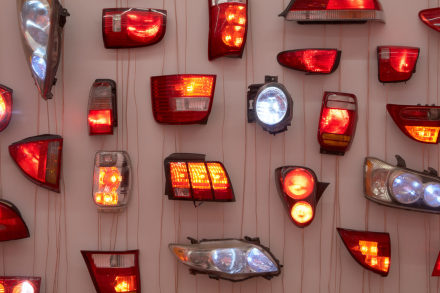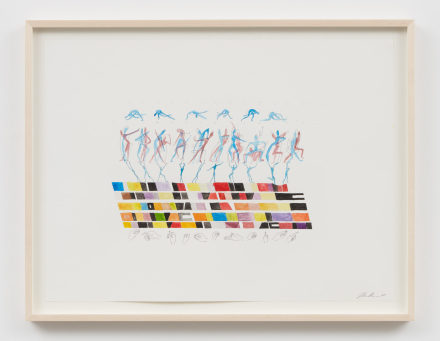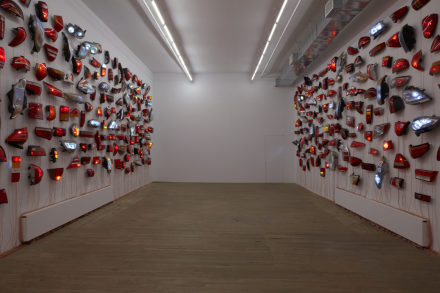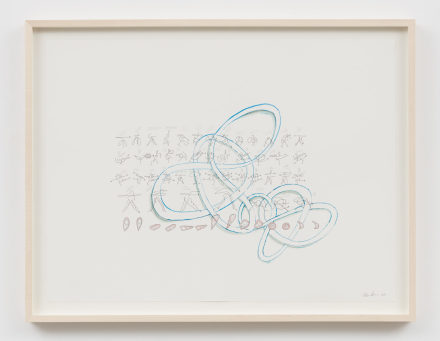
Madeline Hollander, Heads/Tails: Walker & Broadway 1 (2020), all images via Bortolami
Marking her first exhibition with Bortolami Gallery in New York, artist Madeline Hollander presents an ambitious and enigmatic new installation at the gallery’s small-scale space at 55 Walker in Tribeca, titled Heads/Tails. Primarily known for her work in choreography, performance and dance, Hollander’s work here is her first major solo exhibition without human actors. The installation consists of hundreds of used automobile headlights and taillights, drawing on local contexts and systemic interventions to turn Hollander’s interest in both human agency and technological networks, and the feedback systems that dictate and reshape the behavior of both.

Madeline Hollander, Intersection Parallax Dance (2019), via Bortolami
The show draws on a series of simulated agents, New York drivers stuck in traffic that act out their respective behavior profiles through patterns of braking and accelerating. The lights in the gallery, synched with the traffic signal at the nearby intersection of Walker Street and Broadway, ultimately provide a framework in which a sliver of human behavior is accessible. The installation’s taillights illuminate in incremental and erratic patterns modeled after the behaviors of various types of drivers—lost, rushed, frustrated, texting, or tailgating, for example—turning off again when the light changes to green. At sunset the headlights switch to a “brights” setting and at sunrise they revert to a “fog light” setting, mirroring the street traffic in a nonstop, 24/7 cycle.

Madeline Hollander, Heads/Tails: Walker & Broadway 1 (2020)
Stemming from an attempt to choreograph the vehicular traffic outside of the gallery, Hollander quickly came to the realization that Walker Street’s traffic patterns were already choreographed: The New York City Department of Transportation programs the city’s traffic signals using algorithms that take into account local weather, time of day, statistics from previous years, bus routes, school zones and days, bridges and tunnels, heavy foot traffic, holidays, live collision reports, and other miscellaneous data used in conjunction with live data to time out intervals and keep traffic moving. Hollander, turning this systemic flow of signals and decision trees then mirrors the small flickers of humanity caught within this system, or perhaps introduces randomized, unpredictable behaviors back into the network grid. Rather than force a system into a more tightly networked concept, Hollander’s work instead seems to introduce small flits and glimpses of human form and human cognition, taking what the show’s press release refers to as “ready-made choreographies whose existence we often take for granted,” and turning them into a backdrop against which her drivers assert themselves, hinting at moments of potential chaos or order.
The show is open through February 21st.

Madeline Hollander, Choreography for the Kinetic Theory of Vehicular Traffic (2019)
— D. Creahan
Read more:
Bortolami Gallery [Exhibition Site]



